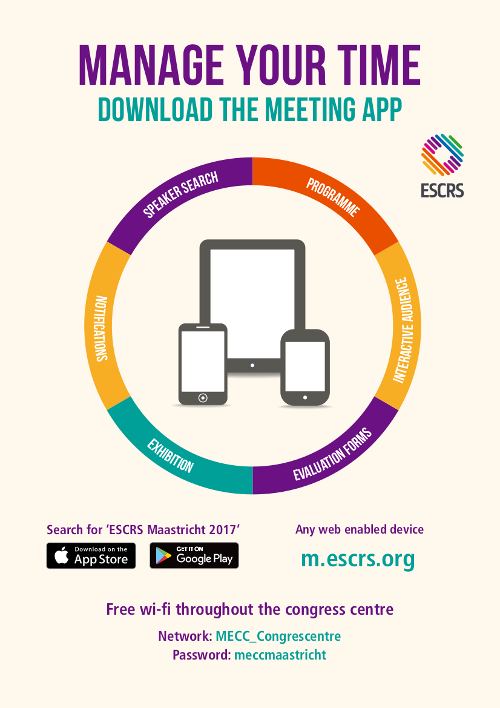Posters
(results will display both Free Papers & Poster)
IOL calculation and refractive results of cataract surgery after topography-guided laser
Poster Details
First Author: A. Martins PORTUGAL
Co Author(s): A. Silva J. Marques A. Rosa C. Tavares M. Quadrado J. Murta
Abstract Details
Purpose:
Residual postoperative ametropia associated with corneal irregularity is frequently found after refractive procedures. Topography-based customized ablation (T-CAT) allows the treatment of corneal irregularities. The purpose of this study was to evaluate postoperative refractive results of cataract surgery after T-CAT and to analyze the influence of T-CAT in the accuracy of intraocular lens (IOL) power calculation.
Setting:
Centro Hospitalar e Universitário de Coimbra, Department of Ophtalmology (CHUC), Unidade de Oftalmologia de Coimbra (UOC), Idealmed.
Methods:
A multicenter retrospective study was performed. We reviewed consecutive eyes that underwent uncomplicated cataract surgery, ≥6 months after T-CAT photorefractive keratectomy (PRK), for which the IOL calculation was achieved with the IOL Master software and with ASCRS online calculator. Pentacam scans were also performed. The postoperative outcomes and the best-corrected visual acuity (BCVA) results were evaluated at the 4th week after surgery. We determined the median absolute error (MedAE), mean absolute error (MAE) and percentage of eyes within a certain refractive prediction error (spherical equivalent ≤-0.50D, ≤-1.00D, ≤-1.50D e >-1.50D).
Results:
The clinical data included 10eyes from 7patients, with a mean age of 56±8.0 years old. All had previously been submitted to the T-CAT procedure due to corneal irregularities after PRK, LASIK or radial keratotomy (RK). The ASCRS formula for IOL power calculation was closest to the ideal in eyes with LASIK, and overestimated the IOL power in eyes with RK. Four weeks after cataract surgery, the mean BCVA was 0,12logMAR (range0,22–1). One eye had a spherical equivalent ≤-0.50D, 3eyes ≤-1.00D, 4eyes ≤-1.50D and 4eyes >-1.50D. The MAE was 1.359D and the MedAE was 1.438D (min0.38D; max2.25D).
Conclusions:
In postRK patients the IOL power suggested by ASCRS formula should be reduced in approximately 0.75to1D, depending on the amount of tissue removed in T-CAT treatment. This results from the donut shape of the enlargement of optical zone than frequently is performed in post RK patients, which resembles a hyperopic ablation. Despite the small sample size, this is the first study evaluating IOL calculation in eyes that underwent topography guided PRK. In the near future, intraoperative aberrometry will possibly be a major technical aid to improve refractive outcomes. There is wide space for improvement in IOL calculation after T-CAT treatments.
Financial Disclosure:
research is funded, fully or partially, by a competing company



